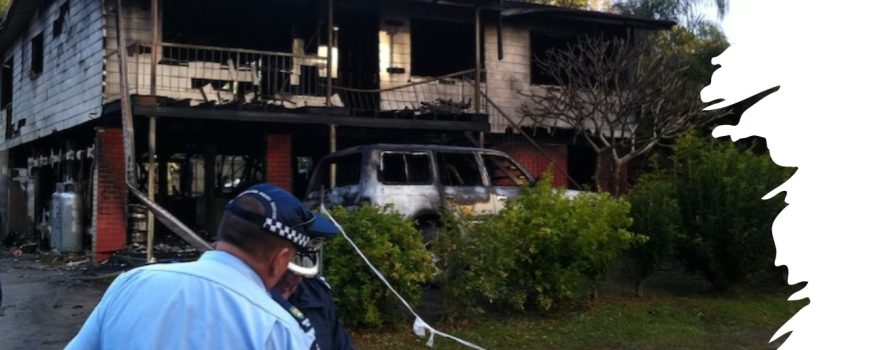These new laws were introduced in Queensland due to several house fires which resulted in multiple fatalities.
Had each dwelling been fitted with functioning interconnected photoelectric smoke alarms in all the newly prescribed locations, the victims may have stood a chance of surviving.
Early detection = early alarm = early escape from a burning building. When the fire occurred, it was not only the flames themselves which presented as a hazard – most victims were first overcome by breathing in fumes and thick smoke.
Palace Backpackers Fire – Childers 2000
In June 2000 a resident of the Childers Palace Backpackers Hostel maliciously lit a fire inside. The fire quickly spread throughout the timber building. Unfortunately the hostel did not have working smoke detectors or alarms and fifteen young people died as a result. The arsonist was captured by police and sentenced to life imprisonment. The after effects of this tragic event are still evident on the local township to this day.
Slacks Creek House Fire – Brisbane 2011
A few minutes before midnight on 23rd August 2011, a fire tore through a house in the suburb of Slacks Creek, South Brisbane.
This fire caused the greatest loss of life in a domestic house fire in Australian history, with eleven people (including many children) dying due to inhaling toxic smoke.
A finding from the 2014 Coronial Inquest stated that;
‘Once this particular fire started, it is likely that some or all of the deaths would have been prevented if the sleeping occupants had been quickly awoken and had realised that they needed to leave the house as quickly as possible … smoke alarms were either not present in the dwelling or were not maintained’.
Many prescriptive requirements and recommendations from the Coronial Inquest were subsequently incorporated into the QLD Building Fire Safety (Domestic Smoke Alarms) Legislation Amendment Regulation 2016.
The legislation can be read here;
https://www.legislation.qld.gov.au/view/pdf/asmade/sl-2016-0221
Russell Island House Fire – Brisbane 2023
Just after 6am on 6th August 2023, Emergency Services were called to a raging house fire on Russell Island, a small community just off the southeast coast of Brisbane, QLD. This house fire tragically resulted in the loss of six lives – that of five young children and also their father who had returned inside the inferno to rescue them. Whilst the exact cause of the fire is undetermined, what is known is that the dwelling did not have legally compliant smoke alarms installed as per QLD’s smoke alarm legislation for rental properties.
The landlord / owner of the rental property was subsequently charged and fined for failing to comply with Queensland smoke alarm legislation.

Want to know more? Watch our ZEN quick-start video or call us on 0478 596 402
We love talking smoke alarms!

